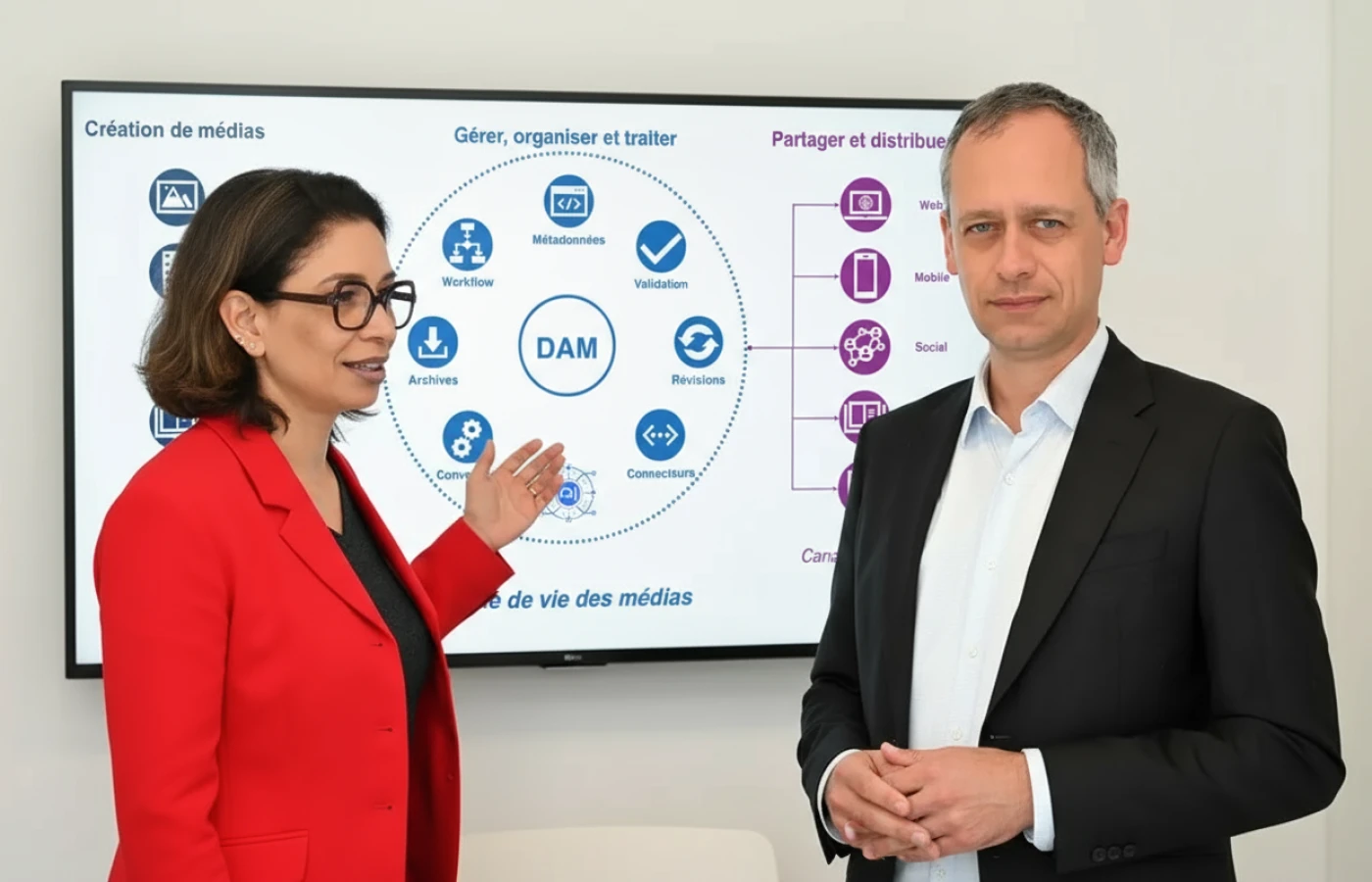
Digital assets management (DAM) centralizes and organizes digital files—images, videos, documents and more—into a searchable, secure repository. A DAM system offers metadata tagging, advanced search, version control, permissions and automated workflows, enabling efficient collaboration and brand consistency. This guide defines DAM, outlines its benefits and core features, contrasts it with basic cloud storage, explains how it works, discusses return on investment and provides practical advice for selecting and implementing a DAM.
The digital revolution has fundamentally changed the way organizations create, distribute and consume content. Marketing departments today produce high‑resolution images, polished videos, intricate design files, audio recordings, presentations, product manuals, code snippets and more. These digital assets are the building blocks of brand experiences across websites, social media, mobile apps, e‑commerce platforms and print. However, as the volume and variety of digital files grow, managing them effectively becomes a monumental challenge. Files spread across personal drives, shared folders, email attachments and disparate cloud services become hard to find and harder to control. Teams waste hours searching for the right version of a graphic or re‑creating assets they cannot locate. Brand managers worry about outdated logos or unapproved images being used publicly. Compliance officers struggle to track usage rights and licenses.
Digital assets management (DAM) is both a business process and a technology solution designed to tame this complexity. At its core, a DAM system is a centralized repository that stores, organizes, manages, retrieves and distributes digital assets. It acts as a single source of truth for all multimedia content, enabling teams to locate and reuse assets efficiently while protecting them with appropriate permissions and metadata.
The term “digital asset” includes any file of value owned by an individual or organization that exists in a digital format, is searchable via metadata and includes access and usage rights. Digital assets span a wide spectrum—from documents and images to audio files, videos, presentations, animations and other media. Managing these assets effectively requires more than simple file storage; it demands structured processes, robust metadata and an integrated system that supports collaboration, workflow automation and governance.
In this comprehensive guide, we explore digital assets management from definition to execution. We examine the key benefits of DAM and why organizations of all sizes invest in it. We outline the features you should expect from a modern DAM solution and detail how such systems work. We compare DAM with simple file storage solutions like Google Drive or Dropbox to illustrate the added value of a dedicated DAM. We delve into the return on investment (ROI) of DAM, demonstrating how time savings, reduced duplication and brand consistency translate into tangible financial returns. Finally, we provide practical guidance on how organizations can implement a DAM system, address common challenges and adopt best practices to ensure success.
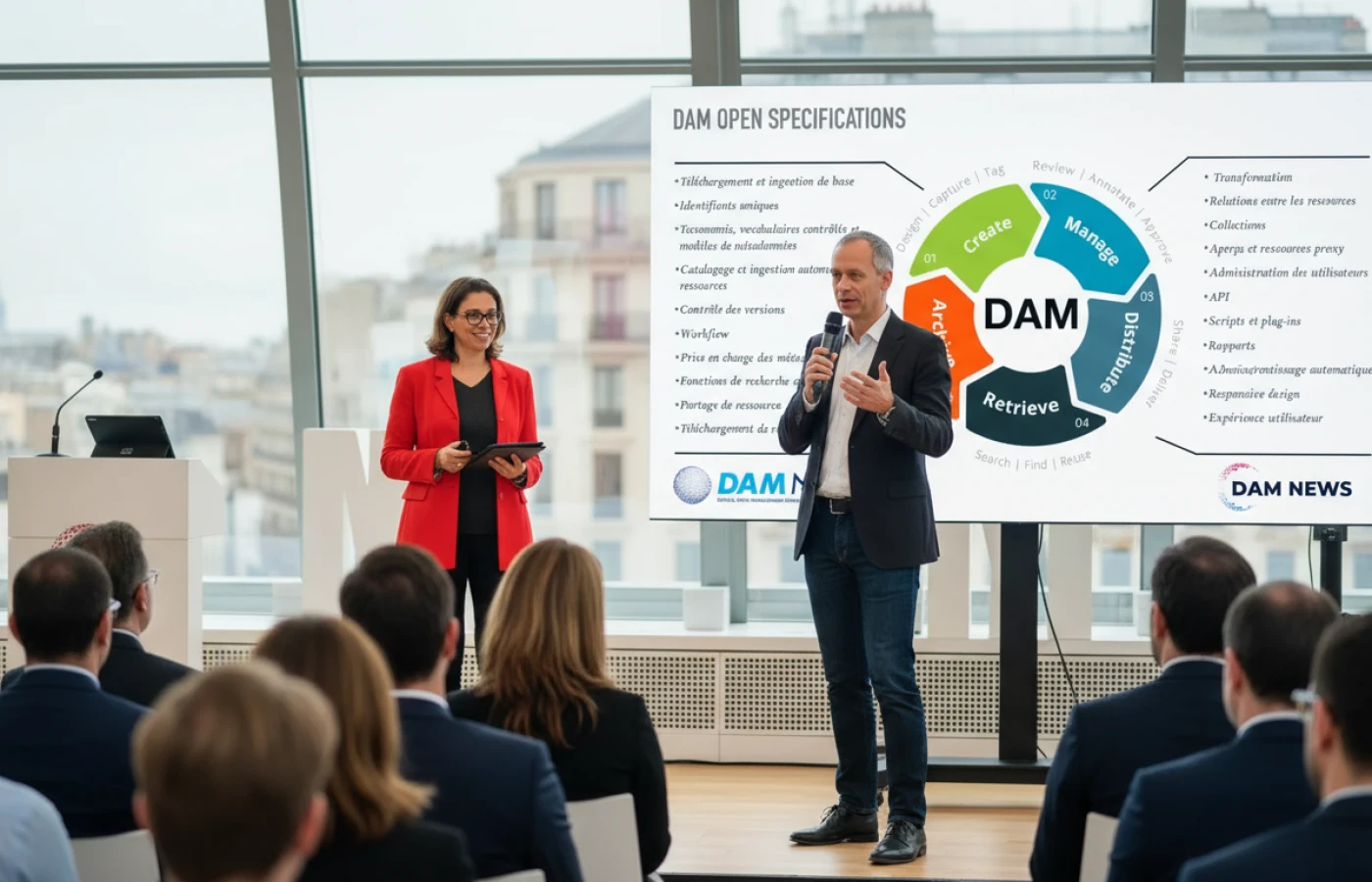
Implementing a digital assets management system offers a range of benefits that impact efficiency, collaboration, brand integrity, compliance and the bottom line. Below we explore these advantages in detail.
One of the most immediate benefits of a DAM is improved organization and faster asset retrieval. Without a centralized system, digital files tend to proliferate across multiple storage locations: desktops, network shares, cloud folders, email threads and external drives. This fragmentation makes it difficult for team members to find the assets they need when they need them. A DAM addresses this issue by storing all digital assets in a single repository and categorizing them with rich metadata. Metadata can include keywords, tags, file types, dates, authors, rights information, campaigns and product identifiers. With well‑structured categories and a powerful search engine, users can locate files quickly by filtering on relevant attributes instead of browsing through endless folders.
Improved organization not only reduces the time spent searching for assets but also reduces frustration and ensures that the right assets are used consistently. Marketers can confidently pull the latest product images, designers can easily find the correct logos or templates, and sales teams can quickly locate updated presentations. Eliminating the chaos of multiple storage locations frees up valuable staff time and helps teams focus on creative and strategic tasks.
A robust DAM system grows with your organization. Traditional storage methods often struggle under the weight of expanding asset libraries, leading to inefficiency and potential losses. In contrast, DAM platforms are designed to scale alongside a business. They handle increasing volumes of content, various file formats and multiple user groups without performance degradation. Cloud‑based solutions are particularly effective at supporting global access and scalability.
Scalability also refers to the ability to adapt the system to your organization’s unique needs. A DAM can accommodate diverse requirements by allowing users to customize metadata schemas and tagging methods. Whether you need to categorize assets by campaign, product line, geography or any other classification, a DAM provides the flexibility to design a taxonomy that works for your team. As your organization evolves—launching new products, entering new markets, or expanding into new channels—the DAM can adapt without forcing disruptive migrations or reconfigurations.
Effective collaboration is essential for creating high‑quality content. When assets are centralized and easily accessible, cross‑functional teams can work together seamlessly. A DAM platform streamlines collaboration by providing real‑time access to the latest versions of assets, enabling users to leave comments, annotations and feedback directly on the files. Version control ensures everyone works with the correct files and prevents confusion over multiple versions.
DAM platforms also offer secure sharing capabilities, allowing teams to share assets internally or externally with partners, agencies or clients. Share links can be password‑protected, time‑limited or watermarked, depending on the sensitivity of the content. These features reduce the friction of collaboration, prevent duplicate work and ensure that feedback cycles are clear and efficient.
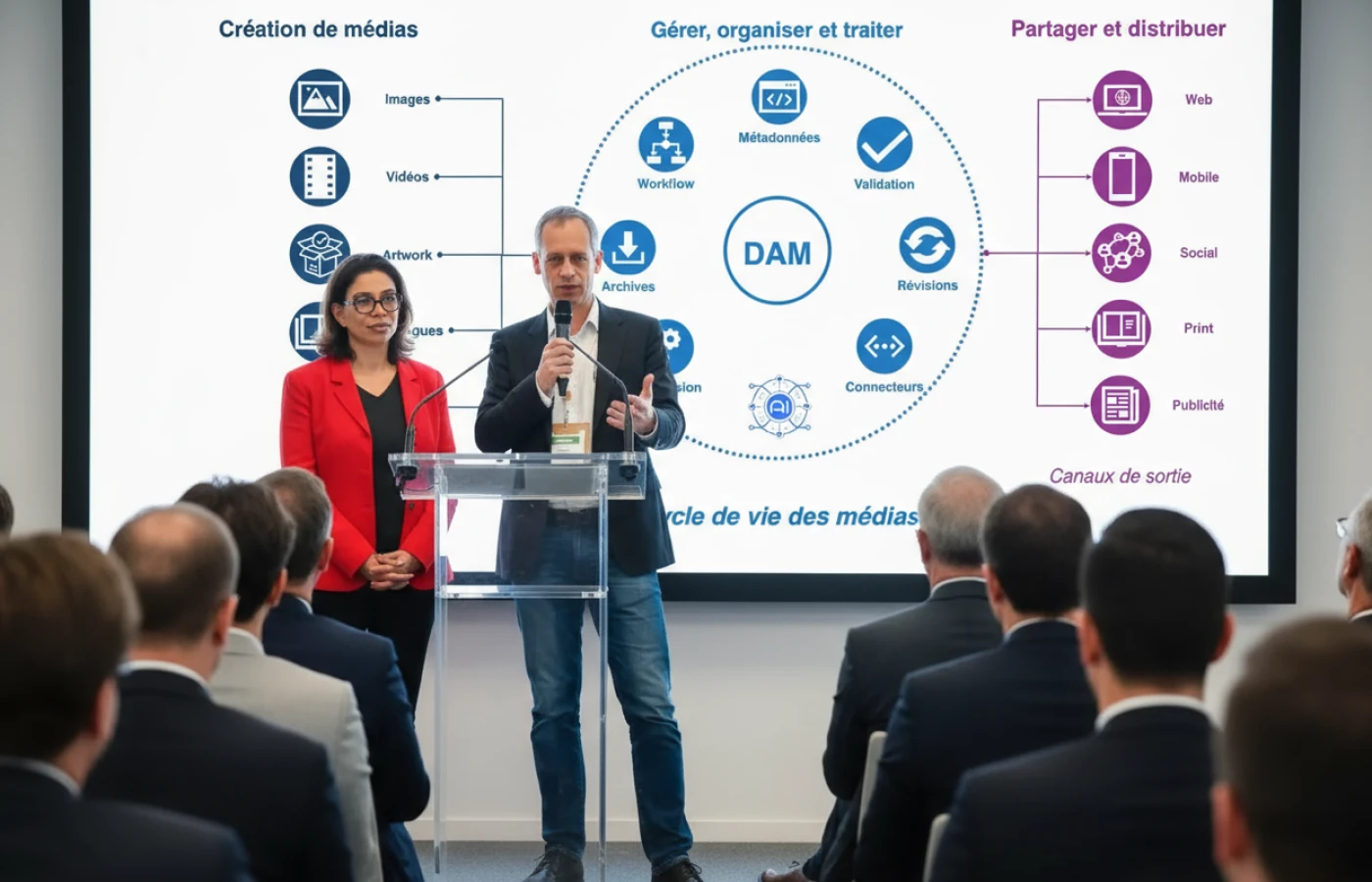
DAM systems are not just repositories; they also provide workflow tools to manage projects from inception to delivery. By organizing assets, tracking their status and automating repetitive tasks, DAM platforms simplify project management. They enable task assignments, progress tracking and resource allocation. Automated approval workflows route assets through the proper review stages—such as legal, brand or compliance—before publication. This ensures that assets are vetted consistently and reduces bottlenecks caused by manual routing.
Because workflows are integrated directly into the asset repository, creative teams can see which assets are awaiting approval, which are pending edits and which are ready for release. Project managers can monitor deadlines and resource utilization in real time. The integration of workflow management with asset storage helps teams deliver campaigns on time and on budget.
Security and access control are paramount when managing valuable digital assets. DAM systems provide robust security features, including encryption, multi‑factor authentication and role‑based permissions. They allow administrators to specify who can view, download or modify specific files. For example, external agencies may have view‑only access to certain assets, while internal designers can upload new versions, and brand managers can approve final files.
These controls protect intellectual property and sensitive information while enabling appropriate access for collaboration. Beyond security, granular access control streamlines workflows by ensuring that users only see relevant assets. When team members are not overwhelmed by irrelevant files, they can work more efficiently and avoid accidental misuse or duplication.
DAM systems offer significant cost and time savings by centralizing assets, automating organization and reducing duplication. The direct costs of physical storage—servers, drives and maintenance—diminish when assets are stored centrally in a cloud‑based DAM. The indirect costs of lost or misplaced files also decline, as assets are tagged and easily retrievable.
Automation plays a big role in saving time. Automated metadata tagging, categorization and distribution free up staff time, allowing teams to focus on higher‑value tasks. Because assets are easy to find and reuse, organizations reduce production costs and avoid the expense of recreating assets that already exist. More efficient workflows lead to faster campaign launches and quicker responsiveness to market trends.
In addition, a DAM reduces the cost of duplicate asset creation and unnecessary purchases. Without a centralized system, teams may inadvertently recreate graphics or purchase stock photography that another department already owns. A DAM ensures that existing assets can be searched and reused before new assets are commissioned or bought.
Brand consistency is critical for building trust and recognition. DAM systems ensure that only approved, up‑to‑date assets are used across channels. They centralize brand elements like logos, style guides and templates, making them easily accessible to all stakeholders. By controlling the distribution of brand assets, a DAM prevents outdated or unauthorized content from slipping into campaigns.
Furthermore, DAM platforms include digital rights management (DRM) tools to track usage rights, apply watermarks and manage licenses. For example, a photograph may be licensed for a specific campaign or region and expire after a certain date. With a DAM, you can set expiration dates and prevent assets from being downloaded when their rights lapse. These features support compliance with licensing agreements and regulatory requirements, reducing legal risks and avoiding costly penalties.
Many modern DAM systems provide analytics that track asset usage, downloads and performance. Organizations can see which assets are most popular, identify underutilized content and measure the return on content investments. This insight informs content strategy, guiding teams to produce more of what works and less of what doesn’t.
Analytics also help justify budget allocations and demonstrate the value of the DAM system. For instance, analytics may reveal that a particular set of product photos is downloaded frequently by the sales team, prompting the marketing department to invest in similar imagery. Conversely, assets that are never used can be archived or repurposed, freeing up storage and creative resources.

Not all DAM solutions are created equal. When evaluating platforms, look for features that address your organization’s current needs and future growth. Below are key capabilities that a modern DAM should offer.
At the heart of any DAM is a centralized repository that can store various file types—images, videos, audio files, documents, presentations, animations and more. The system must manage assets throughout their lifecycle and provide role‑based permissions to preserve asset integrity.
Scalability is essential. A good DAM handles increasing volumes of assets and users while maintaining performance. Cloud‑native architecture offers elastic storage and bandwidth, allowing organizations to add capacity without hardware investments. High‑availability architectures ensure continuous access to assets, even during maintenance or unexpected outages.
Metadata is the backbone of asset organization. A DAM must allow users to define custom metadata fields, controlled vocabularies and taxonomies. Robust metadata management includes auto‑tagging, optical character recognition (OCR) and custom fields. Auto‑tagging uses artificial intelligence to generate contextual metadata by analyzing images and videos to identify objects, people or scenes. OCR scans text within images and documents, making text content searchable.
A strong taxonomy not only aids searchability but also supports governance. Standardized metadata is easier to maintain across teams and ensures that all assets follow the same naming conventions. An effective DAM provides tools to enforce metadata requirements on upload, encourages the use of controlled vocabularies and allows administrators to update metadata schemas without disrupting workflows.
Powerful search capabilities are essential when working with large asset libraries. A DAM should support keyword search, faceted filtering, boolean logic and advanced filters based on metadata. AI‑driven features such as visual similarity search, facial recognition and natural language querying further enhance discoverability. Visual search allows users to find assets based on color, composition or similar imagery, while facial recognition helps locate photos of specific individuals.
These advanced search tools dramatically reduce the time spent hunting for assets. Instead of browsing endless folders, users can type a few keywords or upload a reference image and get a curated list of matches. Natural language queries enable users to search conversationally, such as “find all red product photos from last year’s holiday campaign.”
Version control ensures that teams always work with the most current file. A DAM must track revisions, allow users to revert to previous versions and maintain relationships between different formats (e.g., high‑resolution master files and web‑optimized derivatives). When an asset is updated, the system should record who made the change and when, enabling accountability and rollback if needed.
Rendition management is equally important. A single master file may need multiple renditions—different sizes, resolutions or file types—for various channels. A DAM can automatically generate and manage these renditions, linking them back to the master asset. This capability prevents confusion, eliminates duplicate files and simplifies distribution across channels.
Granular access control protects assets from unauthorized use and ensures compliance with governance policies. A DAM should allow administrators to assign roles (e.g., viewer, editor, reviewer, administrator) and set permissions at the asset or collection level. These controls limit who can upload, edit or download files, safeguarding sensitive content.
Beyond permissions, the system must offer enterprise‑grade security features. Encryption at rest and in transit protects data from interception. Single sign‑on (SSO) and two‑factor authentication simplify secure login. Audit logs record every user action, enabling administrators to trace activity and detect anomalies. Compliance certifications such as SOC 2 or ISO 27001 indicate that a vendor follows strict security standards.
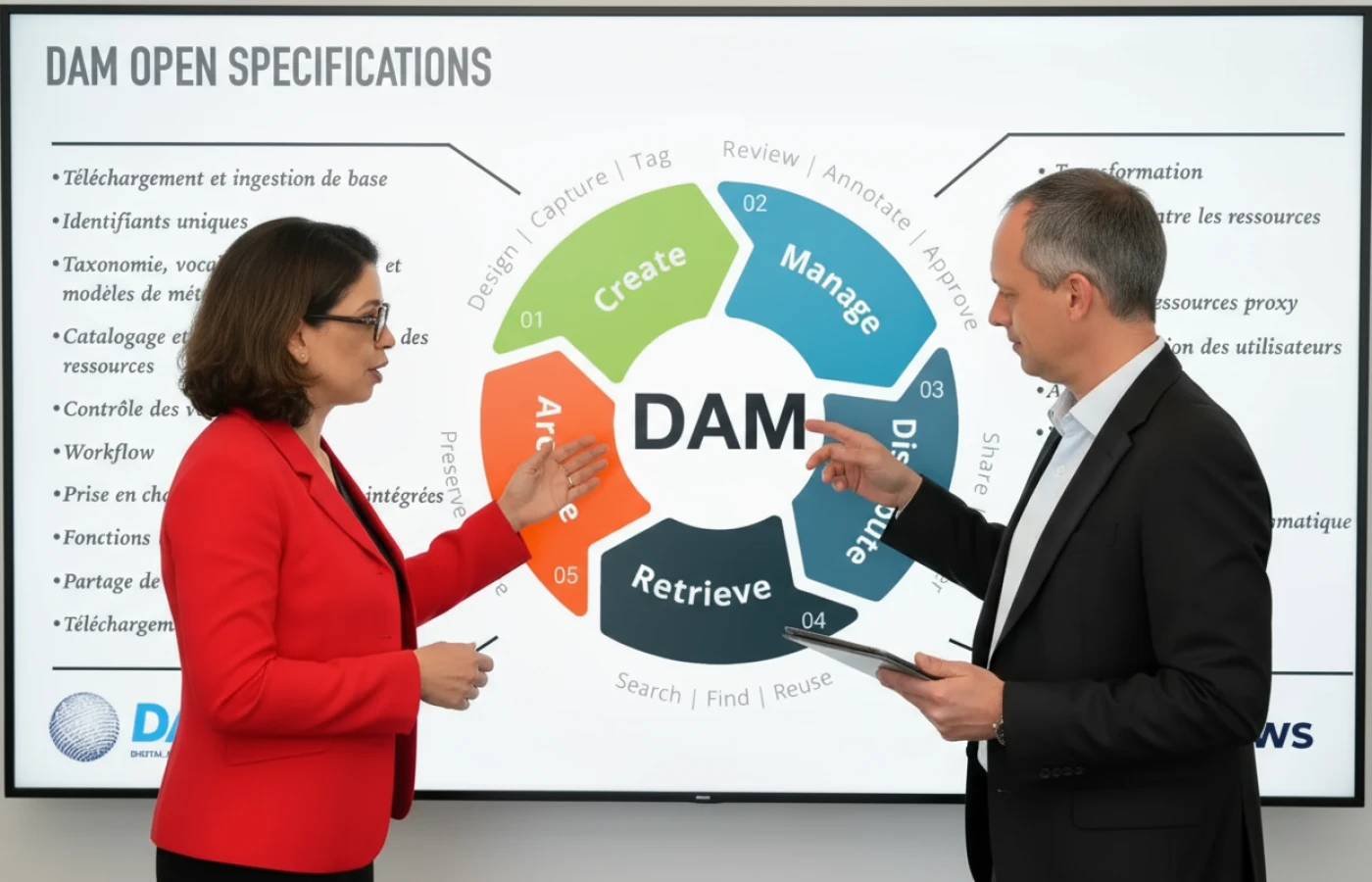
DAM platforms often include workflow tools to automate repetitive tasks. These workflows can handle asset ingestion, metadata assignment, review and approval routing and distribution. For example, when a photographer uploads a new photo, the system can automatically extract metadata, assign it to the appropriate category, notify the design team for review and send it to a brand manager for approval.
Collaboration tools built into the DAM allow users to comment on assets, leave annotations on specific areas of images or videos and @mention colleagues. Real‑time feedback loops reduce the need for lengthy email chains. Integrated project management features help assign tasks, set deadlines and track progress. By centralizing collaboration around assets, teams avoid version confusion and maintain an audit trail of decisions.
A DAM rarely operates in isolation. It must integrate with other systems in your technology stack, such as content management systems (CMS), product information management (PIM) platforms, marketing automation tools, social media management platforms and creative suites like Adobe Creative Cloud. Pre‑built connectors simplify integration with popular tools, allowing assets and metadata to flow seamlessly across the content lifecycle.
An open API is critical for custom integrations. For example, an organization may want to build a custom portal that pulls approved assets from the DAM into a mobile app or automatically push product images from the DAM to an e‑commerce platform. API support allows developers to create bespoke solutions and automate workflows that extend beyond native integrations.
Maintaining brand consistency requires more than just storing files. A DAM should include tools like brand portals, style guides, template management and digital rights management (DRM). Brand portals are external‑facing sites where partners and agencies can access curated collections of assets without exposing the entire DAM. Style guides document the correct usage of logos, colors, typography and imagery, ensuring brand guidelines are followed.
DRM capabilities allow organizations to apply watermarks, track usage rights and enforce expiration dates. Rights metadata may include license types, geographic restrictions, usage limits and royalty information. When rights expire, the system should disable downloads or automatically remove the asset from active libraries. DRM protects intellectual property and ensures compliance with licensing agreements.
Data‑driven insights help organizations understand how assets are used. A DAM with reporting capabilities can track downloads, views, distribution channels and user activity. Reports may show which assets are most popular, which teams download the most files or how quickly approvals are completed.
These metrics inform content strategy and operational improvements. For example, if analytics reveal that certain assets are rarely used, teams can retire or repurpose them. If an asset receives consistently negative feedback, it may need revision. Reporting also helps measure ROI by correlating asset usage with campaign success or revenue outcomes. Executives can see the tangible impact of the DAM and justify continued investment.

A digital assets management system functions as the hub of your content ecosystem. While features vary across platforms, the following steps illustrate a typical workflow from asset creation to archival.
The DAM journey begins with asset ingestion. Organizations migrate existing assets from cloud storage, on‑premises servers, personal drives and local devices into the DAM. Bulk upload capabilities, API integrations and drag‑and‑drop interfaces simplify this process. During ingestion, metadata (such as file type, creator, creation date and rights information) may be extracted automatically.
Some DAM solutions also integrate with creative tools like Adobe Photoshop, Illustrator and Premiere Pro, allowing designers to save files directly into the DAM without leaving their environment. This reduces friction and ensures that the latest versions are stored centrally.
Once assets are uploaded, the system tags them with metadata. Auto‑tagging uses computer vision and machine learning to identify objects, people or text within images and videos. Optical character recognition extracts text from documents and scanned images, while custom metadata fields capture campaign names, product SKUs or legal statuses. Users can also manually add or adjust tags to reflect project‑specific information.
Effective metadata tagging improves searchability and supports governance by ensuring all assets follow the same standards. It also sets the stage for automated workflows because routing rules often depend on metadata values. For instance, assets tagged with “holiday campaign” may automatically flow into a review queue for that campaign.
After metadata is applied, assets are organized into categories, folders or collections according to the organization’s taxonomy. This structure might mirror marketing campaigns, product lines, geographic regions or any classification relevant to the business. The centralized library allows cross‑functional teams to access assets appropriate to their role.
Scalability is crucial here, as the system must handle thousands or millions of files without slowing down. Some DAM platforms employ distributed storage and content delivery networks (CDNs) to ensure fast access from anywhere in the world. Others provide dynamic caching, which stores frequently accessed assets closer to the user for quick retrieval.
With assets properly categorized and tagged, users can locate them quickly. Advanced search features—such as faceted filtering, keyword search, boolean operators and AI‑powered visual search—allow precise discovery. For instance, if a marketer needs all images of a specific product shot in a particular color scheme, they can search using tags and filters or use visual similarity search to find related compositions. Facial recognition and natural language queries further enhance discovery.
Search results often include thumbnails, previews and metadata snippets, making it easy to identify the right asset without downloading it. Users can save searches or create smart collections that update automatically when new assets matching certain criteria are added. Smart collections help teams organize assets dynamically without manual intervention.
Once assets are found, users can collaborate within the DAM. Workspaces enable teams to comment, annotate and approve assets in real time. Automated workflows route assets to the appropriate stakeholders for review and approval, ensuring that marketing managers, legal teams and brand guardians sign off before distribution. Version control tracks changes and maintains a history of edits.
When an asset is approved, the DAM can trigger downstream processes, such as sending the file to a CMS, PIM or social media scheduling tool. Workflow automation reduces manual follow‑up and ensures that assets move through the pipeline efficiently. It also enforces consistency in naming conventions, metadata application and approval criteria.
Approved assets must be delivered to the right channels. DAM systems integrate with distribution tools to automate publishing. They provide secure links, branded portals and integration with content delivery networks to share assets internally or externally. For example, a DAM can push product images to an e‑commerce platform, send a video to a marketing automation system or deliver press kits to journalists via portals.
Distribution features often include options for setting expiration dates on share links, password protection and tracking downloads. By controlling how and when assets are shared, organizations maintain control over their brand and ensure that assets are used within their intended context.
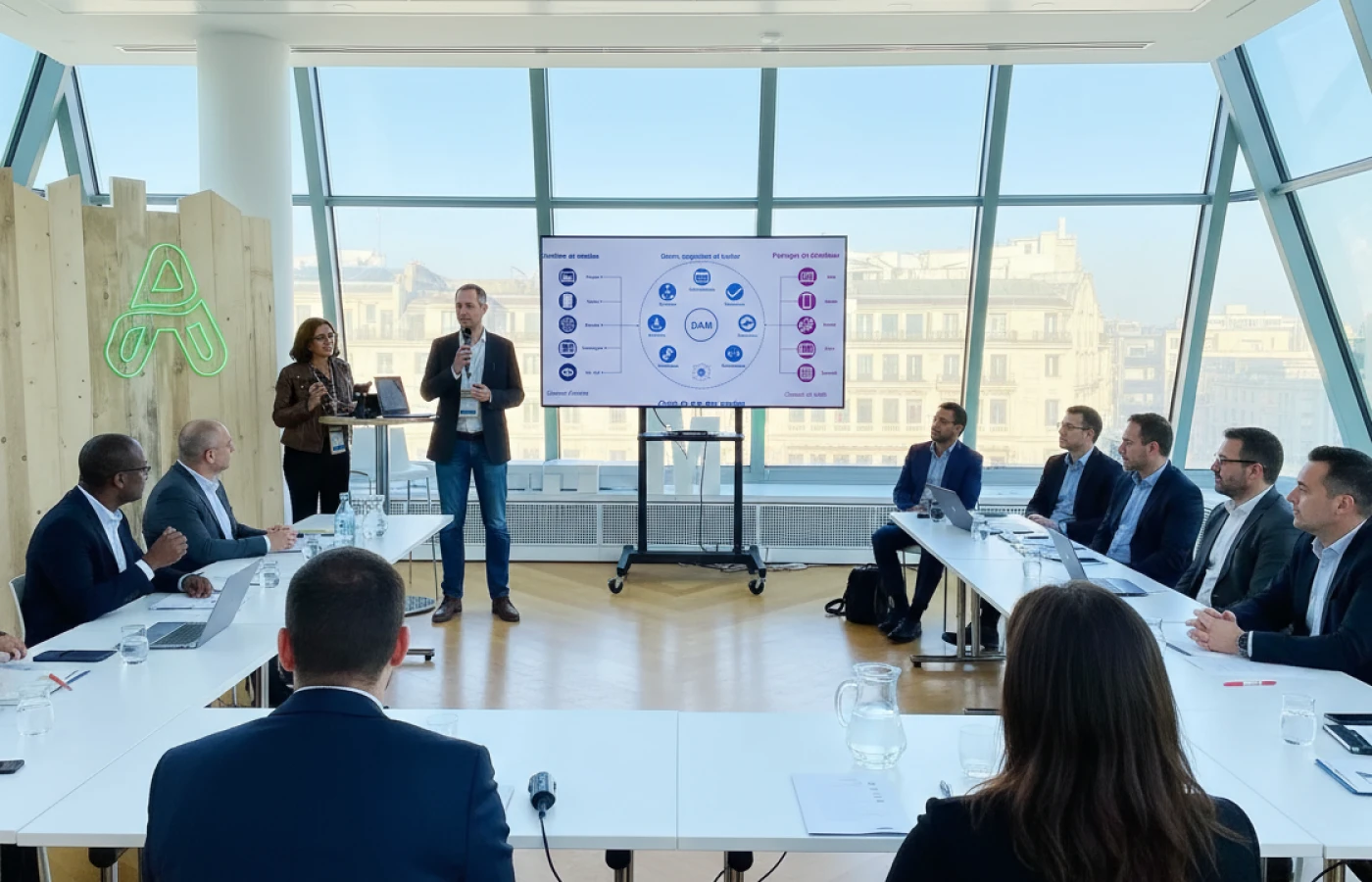
Over time, some assets become outdated or irrelevant. A DAM allows organizations to archive or retire assets based on retention policies. Archived assets remain accessible for reference or reuse but are hidden from active libraries to reduce clutter. Setting expiration dates ensures that assets are automatically moved out of circulation when their rights expire or they are superseded by updated versions.
The ability to reuse archived assets saves time and money by avoiding unnecessary recreation. For example, an organization might recycle photographs from a previous campaign by updating the metadata and applying minor adjustments. Archiving also helps maintain compliance by ensuring that only current and rights‑cleared assets are in active use.
Throughout the asset lifecycle, governance is maintained through role‑based permissions. Administrators set who can view, edit, download or delete assets. Audit trails record every action taken on each asset—who uploaded it, who edited it, when it was approved—providing accountability and compliance with regulations.
Regular audits help organizations assess the effectiveness of their DAM and identify improvements. For example, an audit might reveal that certain users are bypassing approval workflows or that metadata standards are not consistently applied. Correcting these issues ensures that the DAM continues to support governance and compliance goals.
Digital assets encompass any file of value in a digital format with associated metadata and usage rights. In practice, this list includes:
Many organizations start by using general cloud storage services such as Google Drive, Dropbox or OneDrive to store files. While these tools offer basic file storage and collaboration, they lack the specialized capabilities of a DAM. Here are the key areas where DAM systems differ from and surpass simple file storage solutions:
File storage services typically allow only basic metadata fields—file name, type, owner, size and modification date. Creating custom metadata fields requires developer intervention or is not supported at all. In contrast, a DAM enables rich, customizable metadata schemas, auto‑tagging and controlled vocabularies, making assets far more discoverable and manageable. With structured metadata, teams can filter assets by product line, campaign, region or rights status, something that basic storage platforms simply cannot match.
DAM systems include brand tools such as style guides, approval workflows and templates to enforce brand consistency. File storage solutions lack these brand management capabilities entirely, leaving teams susceptible to using outdated or off‑brand assets. A DAM ensures that only approved, on‑brand content is accessible for use. Brand portals and style guides built into the DAM help employees and partners apply consistent branding across all channels.
Search in file storage tools is limited to file names and basic metadata. While cloud drives offer keyword search and some natural language processing support, they lack image recognition and advanced filtering capabilities. DAM systems incorporate advanced search features like AI‑powered visual search, facial recognition and metadata filtering. These features drastically reduce time spent searching and ensure that even obscure assets can be located quickly.

File storage tools provide basic collaboration and version history, but they don’t offer dedicated workflow automation. A DAM, however, includes sophisticated workflow automation tools that route assets through review and approval stages, track versions across different formats and integrate with other systems. The inclusion of workspaces and collaboration portals supports efficient teamwork. External agencies can upload drafts, internal teams can annotate or approve them and all activity is tracked within the DAM.
File storage services can expire shared links and support basic file recovery, but they lack comprehensive digital rights management. A DAM includes DRM capabilities like watermarks, usage tracking, asset expiration and rights metadata. These features protect intellectual property, manage licensing agreements and support compliance with legal and regulatory requirements. In industries where rights management is critical—such as media, publishing or pharmaceuticals—a DAM is indispensable.
While file storage services integrate with some productivity tools, they are not designed to be the hub of an enterprise content ecosystem. A DAM integrates with CMS, PIM, CRM, marketing automation, design software and more. This integration ensures that assets and metadata flow seamlessly across the organization, enabling omnichannel content delivery and eliminating manual data entry. File storage tools cannot match this level of integration.
Investing in a DAM system requires resources, but the returns can be substantial. Organizations evaluate return on investment by measuring time savings, cost reductions, increased revenue and improved brand value. Here are key factors contributing to DAM ROI:
A major contributor to ROI is time saved searching for assets. Studies indicate that employees spend a significant portion of their workweek—sometimes up to a full day—searching for information or files. By centralizing assets and providing advanced search tools, a DAM dramatically reduces this wasted time. For an employee earning a typical salary, the annual cost of time wasted searching for assets can amount to several thousand currency units. For a team of ten, this cost multiplies quickly. Implementing a DAM recoups these costs by enabling employees to find assets quickly.
Without a centralized system, teams may unknowingly recreate or purchase assets they already own. This duplication wastes money and increases storage costs. Consider a company that spends a large sum annually on stock images and inadvertently buys duplicates because different teams use different storage repositories. A DAM can save a significant portion of that budget by preventing unnecessary purchases. In addition, locating and reusing existing assets saves production costs and accelerates time to market.
Ensuring that teams use approved, up‑to‑date assets protects brand integrity and reduces the risk of legal issues. Outdated or unauthorized usage can lead to copyright infringement claims and damage to brand reputation. The cost of a legal claim or reputational crisis can far exceed the investment in a DAM. By maintaining brand consistency and ensuring compliance with licensing agreements, a DAM mitigates these risks and preserves brand value.
Speed is critical in marketing. Without a DAM, a company might take weeks to launch a campaign due to slow asset retrieval and inefficient workflows. Implementing a DAM reduces this time, enabling faster response to market opportunities and improving competitive edge. When marketing teams can find and deploy assets quickly, campaigns launch on time and budgets stretch further.

DAM platforms streamline collaboration by providing a central location for asset review and approval. Automated workflows reduce bottlenecks and manual follow‑up, allowing teams to focus on creativity and strategy. By integrating with other tools, DAM systems create seamless workflows that improve productivity across departments. The time saved through automation and collaboration often translates into higher output and faster time‑to‑market.
To quantify ROI, organizations can use a simple formula:
DAM ROI (%) = (Time Saved + Cost Savings) ÷ Investment Cost × 100
For example, if a team saves 30,000 monetary units per year in wages (time saved) and 5,000 in cost savings from reduced duplication, and the DAM costs 10,000 annually, the ROI would be (30,000 + 5,000) ÷ 10,000 × 100 = 350 percent. This means that for every monetary unit spent on the DAM, the organization gains 3.5 units in value.
In practice, additional factors contribute to ROI, such as increased revenue from faster campaigns, improved customer experiences and reduced legal risks. To build a compelling business case, organizations should collect data on current pain points—search time per asset, asset duplication rates, campaign launch times—and compare these metrics before and after implementing a DAM. Presenting real examples and case studies further strengthens the argument.
Deploying a DAM is more than purchasing software; it is a strategic initiative that requires planning, stakeholder alignment and process changes. Below are the steps organizations should follow when implementing a DAM.
Start by identifying why your organization needs a DAM. Objectives might include improving brand consistency, reducing time spent searching for assets, enabling better collaboration, supporting omnichannel marketing or ensuring compliance. Gather requirements from all departments that will use the system—marketing, design, sales, product management, legal, IT and others. Document the types of assets you manage, integration needs, scalability requirements and security considerations. Having clear objectives helps select the right vendor and measure success.
Understand how assets are currently stored, organized and used. Identify pain points such as inconsistent file naming, missing metadata, duplicate files, bottlenecks in review processes and integration gaps. Assess existing systems—content management, product information management, project management tools—and plan how the DAM will fit into the broader ecosystem. This audit helps define the scope of the implementation and highlights where process changes may be necessary.
Evaluate DAM vendors based on your requirements. Consider features, usability, scalability, integration capabilities, security, pricing and vendor support. Involve representatives from all user groups in demos and trial accounts to ensure the chosen system meets their needs. Ask vendors about their roadmap and commitment to innovation, particularly in areas like artificial intelligence tagging, analytics and workflow automation.
When comparing pricing, be sure to consider both subscription costs and one‑time setup fees. Some vendors charge based on storage volume, number of users or additional modules. A total cost of ownership analysis helps avoid surprises and ensures the solution fits your budget.
Metadata is critical to successful DAM adoption. Develop a schema that includes mandatory fields, controlled vocabularies, hierarchies and naming conventions. Define how metadata will be applied during ingestion and how it will be maintained. Ensure that the metadata structure aligns with business objectives and makes sense to end users.
Educate users on why metadata matters and provide guidelines for consistent tagging. Poor metadata results in hard‑to‑find assets, undermining the value of the DAM. Assign a metadata steward or governance team to oversee taxonomy, address inconsistencies and update the schema as the organization evolves.
Create a detailed implementation plan, including timelines, resources, training and milestones. Decide whether to migrate all assets at once or in phases. A phased approach allows teams to learn and adjust before scaling up. Determine how assets will be mapped to the new metadata schema and how to handle legacy assets that lack proper metadata.
Set up the system with roles, permissions and workflows before migrating content. Pilot the DAM with a small group of users or for a specific project to iron out issues. Use the pilot feedback to refine taxonomy, configure workflows and plan the broader rollout.
User training is crucial for adoption. Provide tailored training sessions for different roles, focusing on uploading, tagging, searching, collaborating and approving assets. Encourage feedback and questions. Promote the benefits of the DAM—time savings, reduced duplication, improved collaboration—to build enthusiasm.
Appoint a DAM administrator or governance team to support users and monitor system usage. Ongoing training and onboarding for new employees ensure that the DAM remains an integral part of your workflows rather than a forgotten tool.
Connect the DAM to other tools in your technology stack, such as your CMS, PIM, marketing automation platform, CRM, project management software and creative applications. These integrations allow assets and metadata to flow seamlessly across the content lifecycle. Develop custom integrations via APIs if necessary to support unique workflows.
Test integrations thoroughly to ensure they perform as expected. Misconfigured integrations can lead to data silos or duplication, undermining the benefits of the DAM.
Once the system is configured and assets are migrated, launch the DAM to the broader organization. Monitor usage, gather feedback and address issues quickly. Iterate on metadata structures, workflows and permissions as needed. Measure success through metrics like asset retrieval time, user adoption, campaign launch speed and cost savings. Use these insights to refine processes and demonstrate ROI to stakeholders.
Adoption is an ongoing process. Encourage regular check‑ins with users, gather suggestions for improvements and adjust training materials. Continuous improvement keeps the DAM aligned with evolving business needs and user expectations.

Implementing a DAM system can be complex. Organizations may encounter several hurdles along the way. Understanding these challenges and planning for them increases the likelihood of a successful rollout.
Without a well‑defined roadmap, organizations may struggle to utilize the DAM’s capabilities fully. For example, a multinational corporation aiming to centralize marketing collateral may flounder without cohesive goals and end up with scattered efforts. To avoid this, set measurable goals and key performance indicators (KPIs) from the start. Examples include reducing asset retrieval time, increasing user adoption rates and decreasing time‑to‑market. Establish metadata standards and uptime expectations. Clear objectives guide decision‑making and help demonstrate success.
Introducing new technology can encounter resistance from teams accustomed to existing workflows. Even with the promise of improved efficiency, some staff may be reluctant to adopt a centralized DAM. Creative teams used to traditional file‑sharing methods might need reassurance and training to embrace new processes. Address this by involving stakeholders in the selection process, communicating benefits clearly and providing comprehensive training and support. Show how the DAM will make their jobs easier, not harder.
Connecting the DAM to existing systems, such as CRM or CMS platforms, can be challenging. If integration is not seamless, data silos may persist and workflows may remain inefficient. Ensure that the chosen DAM has robust integration capabilities and that IT resources are allocated to configure and test these connections. Work with vendors to address integration challenges and allocate time in the project schedule for troubleshooting.
Limited budgets and staff resources can hinder DAM implementation. Organizations may lack sufficient hardware, software licenses or training budgets. Cloud‑based DAM solutions offer scalability and reduced upfront costs, making them attractive for organizations with tight budgets. Plan for resource allocation early and seek executive support to secure necessary funding.
Consider phased implementation to spread costs over time. Identify internal champions who can devote time to DAM administration without needing to hire full‑time staff. Leverage vendor support and training resources to minimize internal workload.
Inadequate metadata governance results in inconsistent tagging, making assets hard to find. Establishing clear metadata standards and maintaining them over time requires governance structures. Assign a DAM administrator or governance team to oversee metadata management, user roles, workflows and system integrity. Provide training and guidelines to ensure that users apply metadata consistently.
Regularly audit metadata quality and correct issues. Feedback loops between the governance team and users help refine metadata schemas and improve consistency over time.
Several strategies can help organizations overcome these challenges and ensure a successful DAM implementation:
Digital assets management has become a cornerstone of modern business. As organizations produce and consume vast amounts of digital media, the challenges of storing, finding, sharing and governing these assets multiply. Without a structured system, teams waste time searching for files, risk using outdated or unauthorized content and struggle to maintain brand consistency.
A digital assets management platform solves these problems by centralizing assets, applying rich metadata, enabling advanced search, controlling access and automating workflows. The benefits are multifaceted: improved efficiency, stronger collaboration, reduced costs, consistent branding, enhanced security, insightful analytics and measurable return on investment. By implementing a DAM, organizations create a single source of truth for their digital content, streamline operations and empower teams to deliver compelling experiences across channels.
Selecting and implementing a DAM requires careful planning—defining objectives, auditing existing workflows, developing a metadata strategy, training users and integrating with other systems. Organizations must also prepare for challenges such as resistance to change, integration hurdles, resource constraints and metadata governance. With clear goals, strong governance and ongoing support, a DAM becomes a transformative investment that unlocks the full potential of digital assets, supports scalable growth and strengthens the brand in an increasingly digital world.